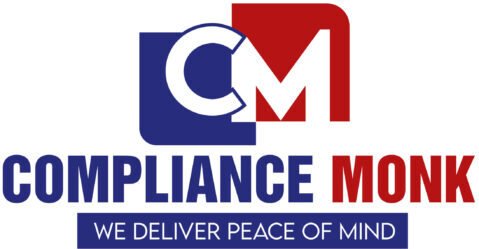
Are you unsure which business structure works best for your small business or professional firm? You get legal protection (because, let’s be honest, nobody wants to lose their house over a business deal gone sideways), but you don’t have to deal with all the corporate red tape.
That’s why a bunch of consultants, lawyers, CAs, and the start-up founders go for LLP Limited Liability Partnership in India.
Here’s what’s inside this guide:
Table of Contents
What is Limited Liability Partnership (LLP)?
Limited Liability Partnership. Sounds fancy, but it’s just a partnership that won’t ruin your life if your partner screws up. Set up under the LLP Act, 2008. MCA runs the show. It’s a separate legal person—yep, like a company, just without the “corporate” suit and tie.
Quick bits:
- You need two partners, at least. Max? Who cares, invite the whole squad if you want.
- “Perpetual succession”—which basically means partners can come and go, but the LLP keeps on.
- Your own stuff (like your bike, your dog, your grandma’s jewelry) stays safe if the business tanks—unless you’re up to something illegal.
Benefits & Key Features of an LLP?
1. No Personal Bankruptcy Nightmares
You can sleep at night. You’re not on the hook for your partner’s dumb decisions or the business’s debt, beyond what you chipped in.
2. Cheap & Fast Setup
No need to empty your savings. No minimum capital needed. You can even bring in a laptop or your sweet collection of NFTs as your “contribution.” Not kidding.
3. Less Paperwork = More Time to Actually Work
File two things a year. That’s it. (Unless you’re making bank, then you might need an audit, but only if you cross ₹40 lakh turnover or ₹25 lakh in capital.)
4. Tax Stuff
Flat 30% tax. No double-taxation nonsense. Partners can pay themselves salaries, bonuses, whatever, and expense it out.
5. Do What You Want (Mostly)
You and your partners make the rules in your LLP agreement. No bossy board meetings. No “sir, please come for the AGM.”
6. Looks Legit
Clients, banks, and your parents will take you more seriously than if you’re just “two dudes with a Gmail account.” Plus, the business keeps going even if someone bails.
🛠️ How to Get it Live
Step 1: Get Digital Signatures & Partner IDs
All partners need a Digital Signature Certificate (DSC) and a Designated Partner ID Number (DIN/DPIN). Yes, it’s as bureaucratic as it sounds, but you can’t skip it.
Step 2: Name Your Baby
Use the MCA’s RUN-LLP service. The name has to end with “LLP.” Can’t call it “SpaceX India” though—keep it original.
Step 3: File the Paperwork
Send in the forms online (details on partners, office address, etc.). Don’t forget the LLP agreement—this is your “how we’ll run this thing” rulebook.
Step 4: Get Your Papers
Once you’re approved, you’ll get an incorporation certificate. PAN and TAN get generated automagically.
Step 5: File That LLP Agreement
Do this within 30 days or face fines. The agreement spells out everything—profit shares, who does what, how to kick out a slacker partner, etc.
And there you go. LLPs: Not perfect, but honestly, if you want something legit without selling your soul to compliance, it’s a solid pick. Just don’t forget to actually file your annual forms, or MCA will haunt your dreams.
Documents You’ll Need
To make the registration process seamless, ensure you have these ready:
- Partner Identification Proofs: PAN card, address proof, and utility bills.
- Office Address Proof: Rental agreement, NOC from the owner, and utility bills.
- Digital Signature Certificates: Required for filing documents online.
- Passport for Foreign Nationals: If any of the partners are international, this is mandatory.
Conclusion
An LLP is ideal for professionals and small enterprises seeking limited liability and operational flexibility without heavy compliance. While it avoids the formalities of a company, it offers more credibility and structure than a sole proprietorship. However, if you plan to raise capital or issue equity, a Private Limited Company might offer better long‑term potential.
Choose LLP if you want liability protection, flexible profit sharing, lower costs—and are comfortable managing compliance. Otherwise, starting with a Sole Proprietorship and converting later remains a viable approach.
Would you like this content formatted into a ready-to-use Word document or blog template with FAQ schema and internal linking suggestions?
Why choose Compliance Monk?
At Compliance Monk, we make registering an LLP as easy as brewing your morning coffee. Let us handle the paperwork while you focus on your business ideas.
Ready to take the plunge? Start your LLP journey with us today. Contact us Now!
LLP vs. Other Business Structures:
| Feature | Proprietorship | Partnership | LLP (Limited Liability Partnership) | Company |
| Ownership | Single owner | Minimum 2 partners; maximum 50 (as per the Act). | Minimum 2 designated partners; no upper limit. | Minimum 2 members (private company); no upper limit for public company. |
| Legal Entity Status | Not a separate legal entity; owner and business are the same. | Not a separate legal entity; partners are collectively responsible. | Separate legal entity distinct from partners. | Separate legal entity distinct from members. |
| Liability | Unlimited; owner personally liable. | Unlimited; partners personally liable. | Limited to the extent of contribution. | Limited to the extent of shareholding. |
| Registration | Not mandatory, but local registrations (e.g., GST) may apply. | Optional but recommended. | Mandatory with the Ministry of Corporate Affairs (MCA). | Mandatory with the MCA. |
| Taxation | Taxed as personal income of the proprietor. | Taxed as the income of the partnership firm. | Taxed as LLP income; no dividend distribution tax. | Taxed as per corporate tax rates; dividend distribution tax applies in certain cases. |
| Compliance Requirements | Minimal compliance. | Low compliance. | Moderate compliance | High compliance |
| Ease of Setup | Very Easy | Fairly easy | Moderate; requires MCA registration. | Complex; requires multiple regulatory approvals. |
| Cost of Setup | Very low. | Low to moderate. | Moderate. | High. |
| Scalability | Limited scalability. | Limited scalability. | Moderate scalability; suitable for professionals and small businesses. | High scalability; ideal for large businesses. |
| Control | Sole control by proprietor. | Shared control among partners. | Shared control among designated partners. | Managed by directors on behalf of shareholders. |
| Perpetual Succession | No; business dissolves with the proprietor’s demise. | No; dissolves with the exit/death of partners unless specified otherwise. | Yes; continues irrespective of partner changes. | Yes; continues irrespective of member changes. |
| Best Suited For | Small businesses, individual entrepreneurs. | Small to medium businesses, family businesses. | Professionals, startups, and small-to-medium businesses. | Large businesses, startups with funding needs. |
FAQs on Limited Liability Partnership
What is an LLP?
A Limited Liability Partnership (LLP) is a business structure that combines the flexibility of a partnership with the limited liability protection of a corporation. It operates as a separate legal entity, meaning the LLP can own assets, enter into contracts, and sue or be sued independently of its partners.
Who can register an LLP in India?
Any two or more individuals or entities can form an LLP in India. At least one of the designated partners must be a resident of India, and both individuals and corporate entities can become partners.
What are the key benefits of forming an LLP?
Limited Liability: Partners are only liable up to their agreed contribution.
Separate Legal Entity: The LLP is distinct from its partners.
Unlimited Partners: There’s no upper limit on the number of partners.
Ease of Compliance: LLPs have fewer regulatory requirements compared to companies.
Tax Benefits: LLPs are taxed as a partnership firm, avoiding dividend distribution tax (DDT).Can an existing partnership firm be converted into an LLP?
Yes, an existing partnership firm can be converted into an LLP under the provisions of the LLP Act, 2008.
How is an LLP different from a private limited company?
Liability: Both offer limited liability, but an LLP has fewer compliance requirements.
Ownership: LLPs do not have a shareholding structure, unlike companies.
Compliance: LLPs have simpler compliance and are cost-effective to maintain.How long does it take to register an LLP?
The process typically takes 10–15 working days, depending on the completeness of documents and the approval process at the Registrar of Companies (RoC).
